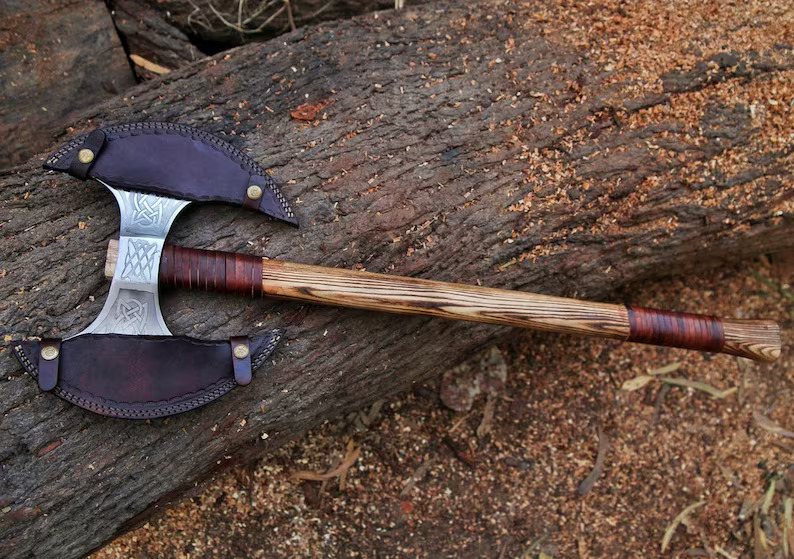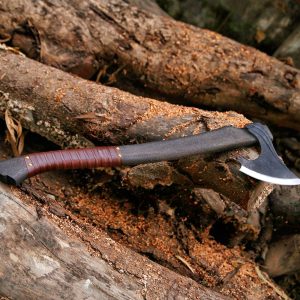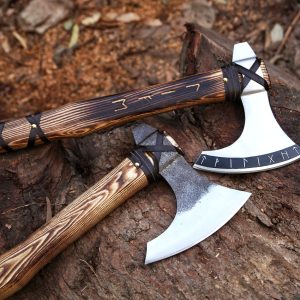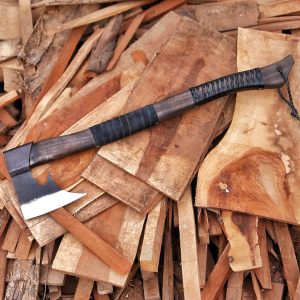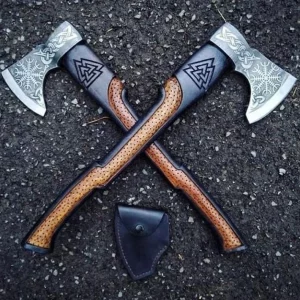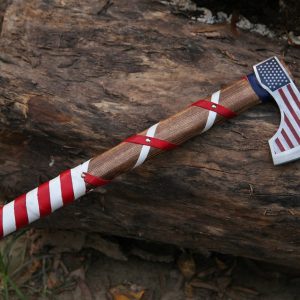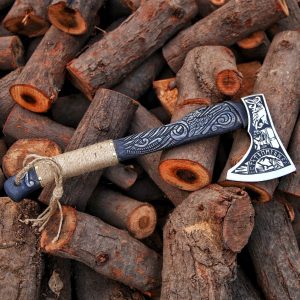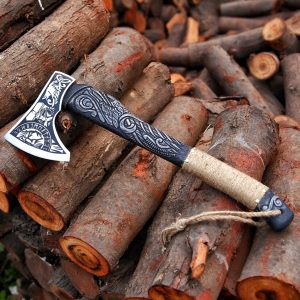Double-headed axes, often referred to as beautiful Viking axes
$129.00
Double-headed axes, sometimes affectionately known as “beautiful axes,” have captivated people throughout history with their unique design and versatile functionality. One of the most iconic iterations of these axes is the Ragnar axe, made famous by its association with the legendary Viking warrior, Ragnar Lothbrok.
Certainly, let’s delve deeper into the fascinating world of double-headed axes, often referred to as beautiful Viking axes, with a particular nod to the legendary Ragnar axe.
The Allure of Double-Headed Axes
Double-headed axes, sometimes affectionately known as “beautiful axes,” have captivated people throughout history with their unique design and versatile functionality. One of the most iconic iterations of these axes is the Ragnar axe, made famous by its association with the legendary Viking warrior, Ragnar Lothbrok.
The Legacy of Ragnar Lothbrok
Ragnar Lothbrok, a semi-legendary Norse hero and warrior, is often depicted wielding a formidable double-headed axe. His exploits, both in sagas and modern media adaptations, have solidified the image of the Viking warrior and his weapon of choice.
The Anatomy of Double-Headed Axes
To truly appreciate these remarkable weapons, it’s essential to understand their anatomy:
Dual Blades for Dual Purpose
The defining feature of double-headed axes is, of course, their dual blades. This design allowed for a range of applications, both in battle and everyday life. The two blades could be used for chopping wood, but in battle, they provided a distinct advantage.
Balanced Handle for Precision
The handle of a double-headed axe is meticulously crafted to ensure balance and control. This precision in design made it an effective weapon in the hands of a skilled warrior.
The Versatility of Double-Headed Axes
Battlefield Mastery
In the context of warfare, the double-headed axe was a force to be reckoned with. Its dual blades allowed for powerful and precise strikes, making it a favored weapon among Viking warriors. The ability to cut through armor and deliver lethal blows made it a formidable choice in close combat.
Beyond the Battlefield
While these axes were formidable in battle, they also played a crucial role in everyday Viking life. They were used for various tasks, such as cutting timber for building ships or homes, and even as a tool for farming.
Craftsmanship and Aesthetics
The craftsmanship behind double-headed axes was unparalleled. Viking blacksmiths were skilled artisans who took great pride in forging these weapons. The aesthetics of these axes often included intricate engravings, runes, and other decorative elements, adding both beauty and cultural significance to the weapon.
The Enduring Appeal
Modern Interpretations
Today, the allure of double-headed axes persists. They continue to be popular among enthusiasts, collectors, and reenactors who appreciate their historical and artistic value. Some even choose to craft their axes, keeping the ancient tradition alive.
Pop Culture Icon
Thanks to their appearances in popular culture, especially in Viking-themed shows like “Vikings,” these axes have become iconic symbols of Norse mythology and warrior culture.
Conclusion
In conclusion, double-headed axes, often epitomized by the likes of the Ragnar axe, are not merely weapons; they are symbols of a rich and storied history. Their legacy continues to thrive, as modern admirers are drawn to their craftsmanship, versatility, and the indomitable spirit of the Viking warriors who wielded them.
Whether you’re an enthusiast, a collector, or simply intrigued by the captivating world of Viking weaponry, the double-headed axe remains an enduring and beautiful testament to the craftsmanship of the past.
So, embrace the allure of the double-headed axe and explore its fascinating history and modern-day significance. It’s a journey that promises to be as beautiful as the axe itself.
Related Products
You May Also Like
Our premium quality custom handmade products for your smart kitchen.
Related products
-
Handmade Axes
American Axe Custom Handmade Carbon Steel, Olive Wood
$119.99Original price was: $119.99.$99.99Current price is: $99.99. Add to cart -
Handmade Axes
The 18-Inch Wood Cutting Axe and Hatchet
$199.00Original price was: $199.00.$149.00Current price is: $149.00. Add to cart -
Handmade Axes
Handmade Pair of Viking Axes | Pakka Wood Axes | Custom Axes Pair
$270.00Original price was: $270.00.$199.00Current price is: $199.00. Add to cart


